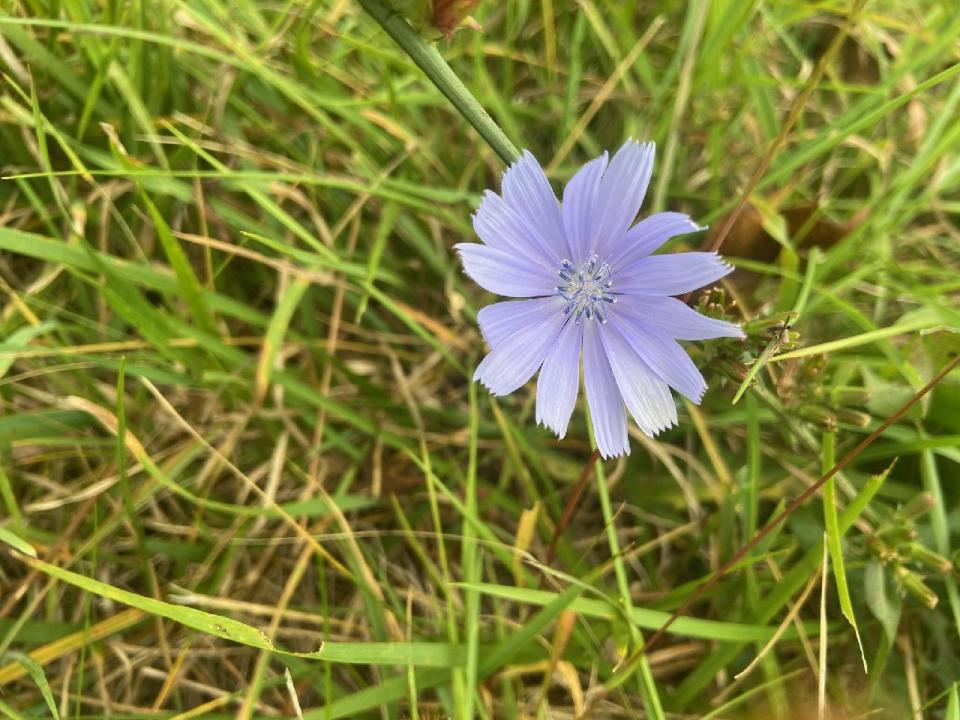Over the Garden Fence: The perennial chicory plant
As summer ended on the calendar and a quiet autumn entered, my intention to capture my long-time favorite roadside plant remained in my head. So on the way home from an event at Maumee Bay, watching for a last chance on an overcast afternoon, a few blue chicory blooms bounced against the wind. This blue plant has been showing off since July and in another week its blossoming period would end.
Parked oddly on the side of the road, phone in hand, I struggled against the wind to capture this small flower. Never fear, we seekers of beauty succeed. You probably do not find this branching, straggly-looking plant pretty. It is a biennial which behaves like a perennial.
If you care at all and take a close look at the basal leaf eruption, you would notice that it resembles a dandelion plant. As stems grow, the leaves along the way become smaller. They can be harvested in spring and fall for salad greens. Blanch them first before eating. Any bitterness is diminished in the blend of other greens. Wild plant gurus caution that summer brings on the greatest amount of bitter flavor.

The species of chicory which dots our Ohio roadsides remains a mystery to me. In other countries other species of chicory have a long history of use as a curative plant. The roots have been harvested, baked in some manner, then ground up and used as a substitute for coffee. Fall is the time to dig the roots and start this process if you harvest edibles. The species to seek would be sativum.
Though drawn to the light blue color and having read Euell Gibbons' books conjuring coffee has never pressed me forward. The childhood enchantment of blue never went away, but harvesting this flower for arrangement purposes did not happen. First, if you were out walking and wanted to gather the blue hues for some short happy moments, this plant is not easy to pull, tear or cut. If you do manage to cut it, the plant makes a decision to go along with the end of life and flowers close up. They stay closed dreary days anyway. Stems do not readily accept water even when cut carefully with pruners or scissors.
There is beauty in the two rows of light blue brachts, the inner ones a bit longer and standing up while the outer row is shorter and spreads outwardly revealing its toothed edges.
The contrary behavior of chicory's blossoms might just be its defense. There is a giftedness about the way it stands out in the tough curbside of highways, in gravelly areas, near parking lots and open woody fields.
Mary Lee Minor is a member of the Earth, Wind and Flowers Garden Club, an accredited master gardener, a flower show judge for the Ohio Association of Garden Clubs and a former sixth grade teacher.
This article originally appeared on Bucyrus Telegraph-Forum: All about the chicory plant

